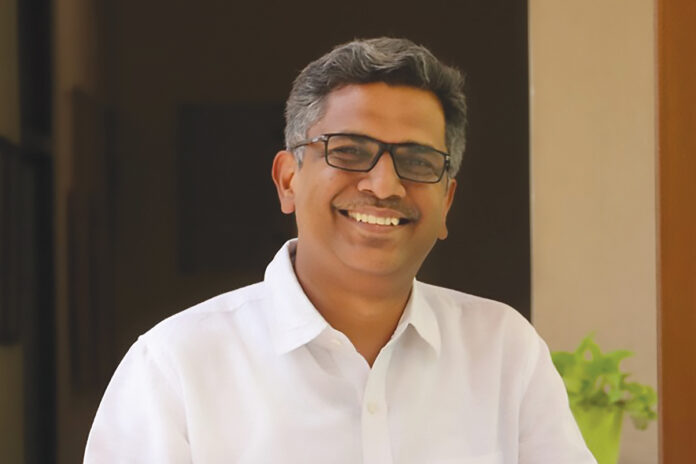Words by Dr. Manu Gupta
Climate change has now become an existential problem for humanity. Around the world, temperatures that were increasing at 0.07 degree Celsius since the industrial revolution in the 1800s have now dramatically doubled since the 1980s. In the last four decades, we have witnessed corresponding rise in climate related disasters. The number of disaster events – floods, storms, droughts, too have doubled.
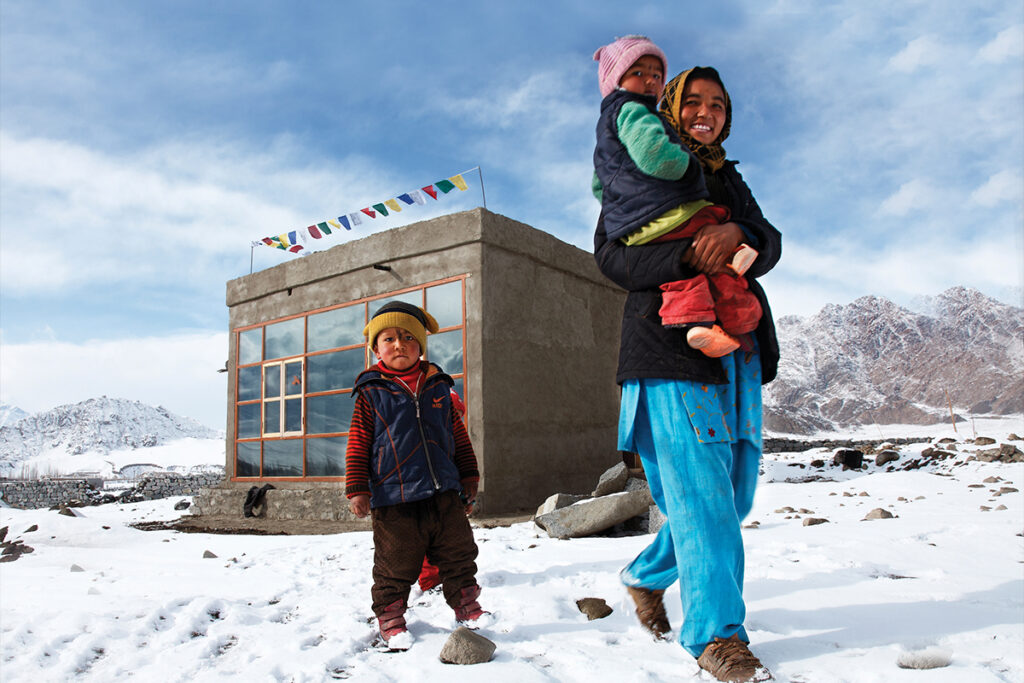
With societal evolution and progress, we have also been experiencing increased losses. India is among the top 10 countries impacted by climate change losing up to $87 billion annually. This has significantly eroded development investments with severe adverse impacts on people’s lives, livelihoods, quality of life and infrastructure. We now have to live and adapt to these increasing risks in our environment.
As much as sustainable lifestyles would help lowering climate related losses in the long term, adapting our lives to existential challenges will help arrest further loss. In the next 10 years, the current generation must rapidly evolve and pave pathways for stronger resilience to shocks and stresses, ensuring better survival, adaptation and progress. Investing in innovation makes it possible to bring positive disruptive change at scale and much needed speed.
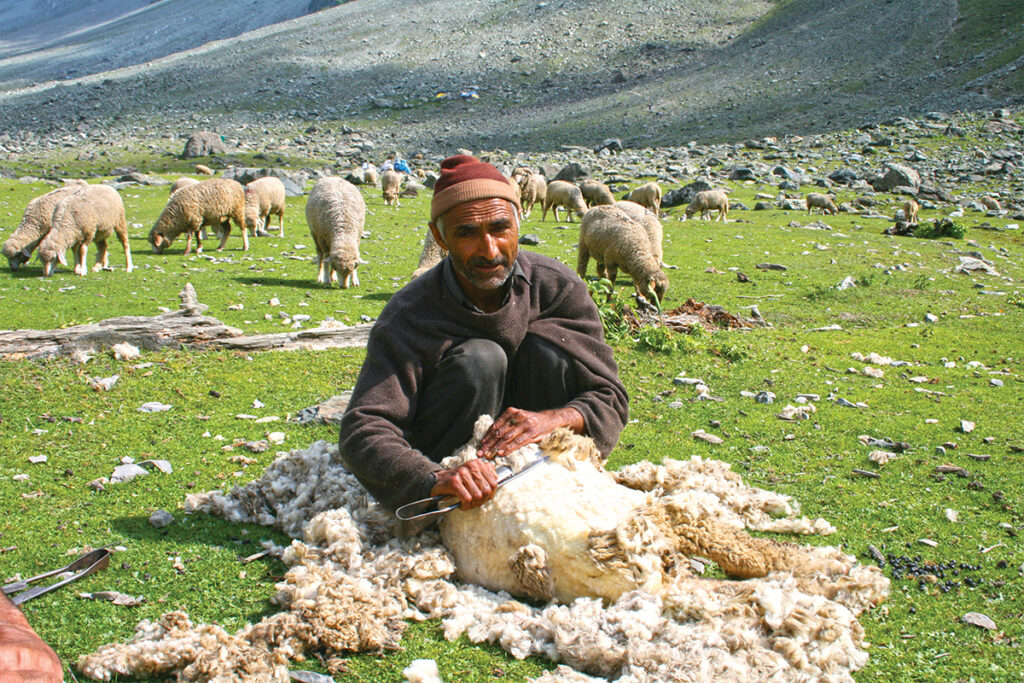
Thirty years ago, together with friends and well-wishers, we founded Sustainable Environment and Ecological Development Society (SEEDS), a nonprofit assisting communities impacted by environmental extremes. To date, over 7 million such lives have been touched, and each time we have come away learning from the immense local wisdom of the people, their innovation, and their propensity to adapt to growing risks.
How are local communities innovating
In the arid deserts of Rajasthan, where pastoralists are faced with challenges of sustaining their livelihood due to climate variabilities, SEEDS together with Bikaner-based Urmul Seemant’s Samiti has facilitated the setting up of privately managed Common Facility Centres (CFCs). These provide a package of basic support services of drinking water, fodder plantation, vaccination camp and a marketplace for transhumant pastoralists in two villages of Jodhpur district, Rajasthan in western India. These services are increasing the resilience of the pastoralists to climate shocks and stresses.
Urmul’s engagement with pastoralist communities provided them with a unique perspective on the issues that affect this ecosystem. By leveraging traditional knowledge, building partnerships, harnessing appropriate technology, and utilising available resources, Urmul has made a meaningful impact on their lives providing sustainable means to effectively conduct pastoralism and generate income from the same. Thus, mitigating and preparing them for impacts of climate variabilities on their livelihoods and addressing challenges they face regarding rangelands, livestock, and other natural resources.
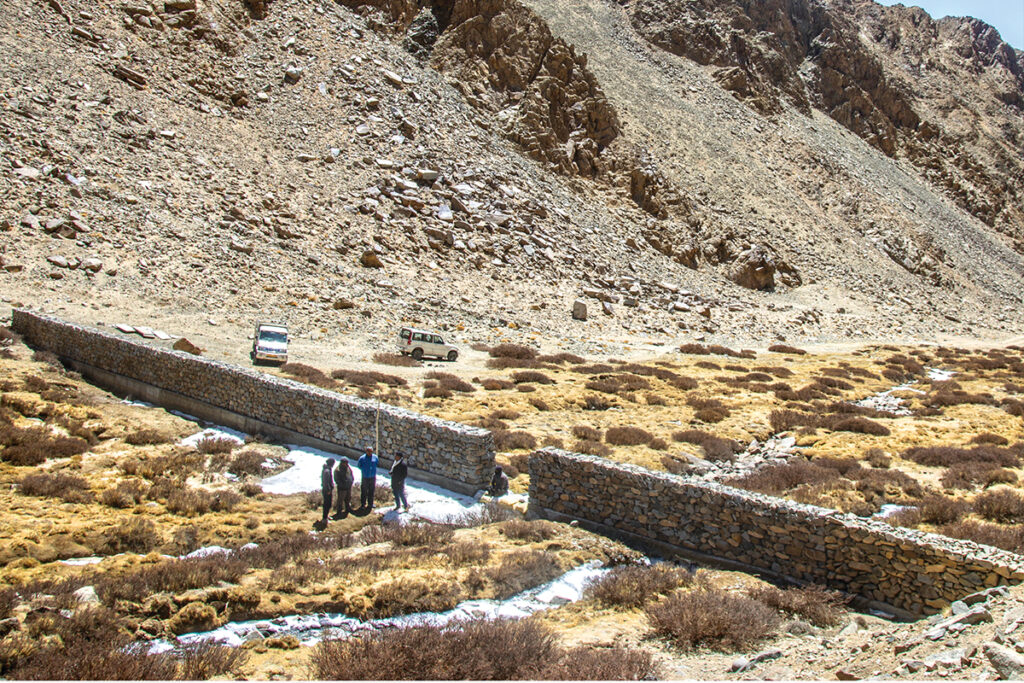
To the north or India, at an elevation of 14000 ft climate change is causing significant impacts on Leh-Ladakh the high-altitude cold desert region of the Himalayas. Rising temperatures are leading to glacial melt and increasing the risk of glacial lake outburst floods. This glacial meltwater has long been crucial for supporting agriculture and sustaining the livelihoods of the local communities. Changing precipitation patterns have brought erratic and unpredictable rainfall, further disrupting the delicate balance of the ecosystem.
The villages in Ladakh are experiencing an accelerated flow of water during the summer months, but there is a decrease in water availability during the crucial sowing season in April and May. Almost 90% of farmers in Ladakh are dependent on snowmelt water for irrigation. With diminishing water availability during the critical sowing season, agricultural practices are being severely affected, posing a significant threat to food security and the local economy.
SEEDS has enabled the Leh Nutrition Project (LNP), in collaboration with the communities of Mudh and Tsaga villages in Changtang, to construct cascading artificial glaciers in their respective villages to address the problem. A cascading artificial glacier is a water harvesting technique that involves the construction of cascade type retaining walls in stone masonry over a stream to conserve the water in the form of ice. It gradually melts during the sowing season, providing a valuable water source for ground water recharge, rejuvenation of springs and irrigation. The water committee members in Mudh carefully chose a location for the artificial glacier. Men and women actively participated in constructing a 300 ft long by 5 ft high cascading wall.
In the flood prone areas of Bihar, SEEDS provided technical support to the Centre for Aquatic Livelihoods to initiate Project Pokhar in Dhamdaha block of Purnia, Bihar. Designed to build resilience to climate change within fisheries and aquaculture communities the project has instilled confidence among farmers and fishermen that there can be alternatives to the traditional methods of fish rearing. These new sustainable methodologies are cheaper and can bring income to the rural households. Innovation for them is anything that brings in better productivity and efficiency.
At SEEDS we are also promoting local nature-based solutions. India’s eastern coast while endowed with a rich biodiversity reserve is now under great peril due to the exposure to human activities and settlements. Revered mangroves are potentially at risk in the Sundarbans region. This includes loss of land due to increased erosion, damage to coastal infrastructure, salinisation of freshwater supplies. Agriculture in the region is also affected by ever-increasing salinity and sea water-sulfate concentrations, caused by the decreased runoffs in the eastern rivers. The decrease in freshwater run-off has also affected mangrove growth.
In the Sunderbans alongside the training for women to nurture the saplings, the ‘Green Team Training’ is fostering learning and innovation in the art of environmental conservation. Children are ambassadors and entrusted with a critical mission to carry the message back to their homes and to society in turn. Emphasis is laid on the following environmental awareness, sustainable practices, biodiversity conservation, community engagement, climate change education and hands-on activities.
Innovation Pathways
SEEDS is enabling change by working with communities and innovating, researching along with them. When ready these innovative pilots are being incubated and accelerated. Building partnerships and a marketplace for systematic change are then the natural progression.
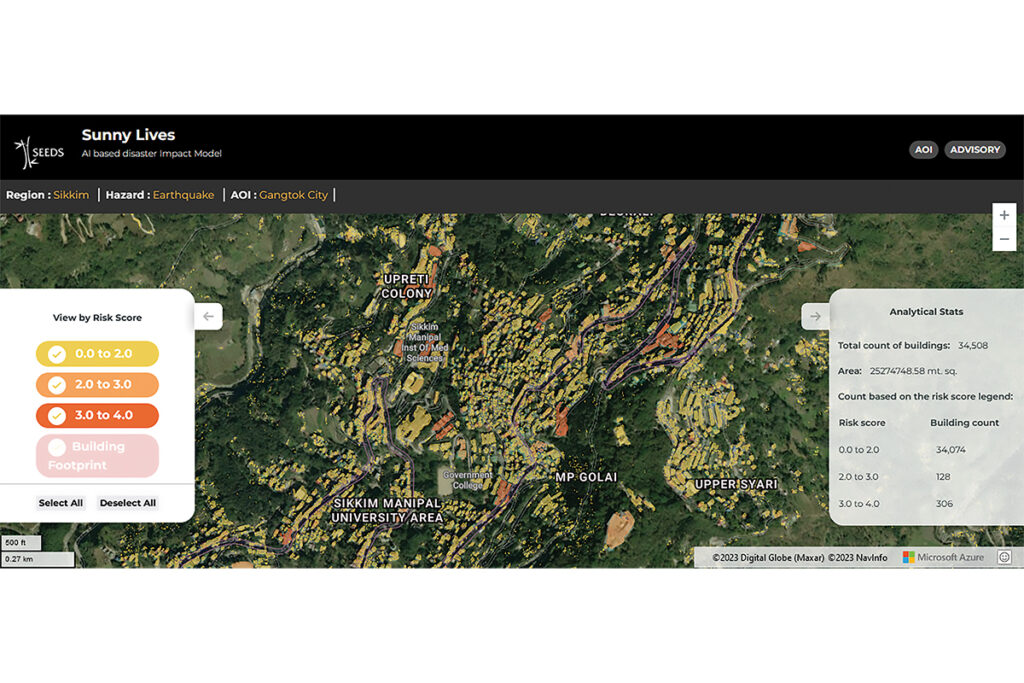
We are determinedly driving to develop a sustainable, inclusive, diverse, and locally rooted innovation network, which can drive change, increase reach, and deliver humanitarian initiatives in the long-term. Strengthening local capacity to provide scaling, partnership, and impact measurement assistance to high-potential innovators for improving programme outcomes and developing an innovation ecosystem in India capable of responding to increasing and complex humanitarian disasters are all part of a well thought strategy for 2030.
Technology and AI
In this landscape it would be near impossible to move ahead without acknowledging innovative solutions such as Artificial Intelligence (AI) that have also made their applications for disaster risk assessment ranging from city to country.
Our work on an AI tool – Sunny Lives – has shown that we can fill a gap where there is a lack of localised risk assessments means. In situations where we do not fully understand what causes risk, who is at the most risk such hyperlocal risk assessments are components of design and implementation. In the emerging climate change adaptation space people-driven interventions such as proactive and scalable vehicles to tackle climate change and disaster dynamic digital infrastructure serve as public good.
Local leadership and ecosystem building to sustain and scale change
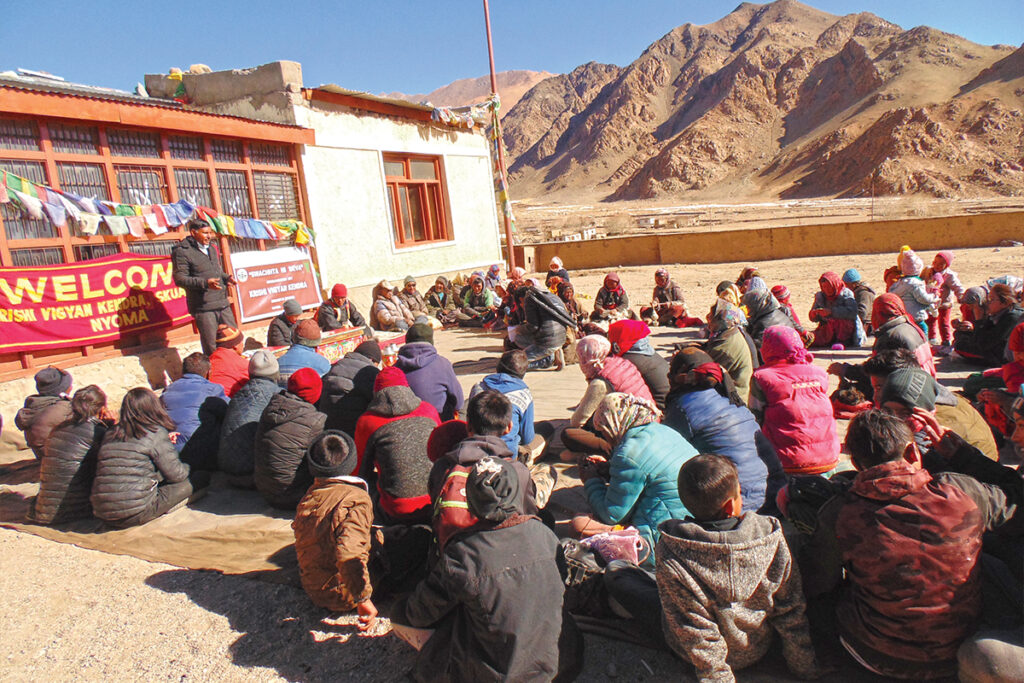
What then will it take to enable the most marginalised of the 316 million people residing in 225 climate vulnerable districts of India to survive, adapt, and thrive despite recurring disasters. The future of the planet lies in fostering and promoting locally led innovative solutions that encourage self-reliance and are sustainably integrated within the existing social systems (culture, materials, regulations, and ecology) in the communities. Creating a global ecosystem that enables organisations and individuals to engage in their innovative practices based on indigenous knowledge of communities and are supported through technological and social science inputs to tackle the mounting humanitarian challenges and protect development gains. It is these pathways that will speed up and bring to fruition impact to scale for humanitarian causes.


